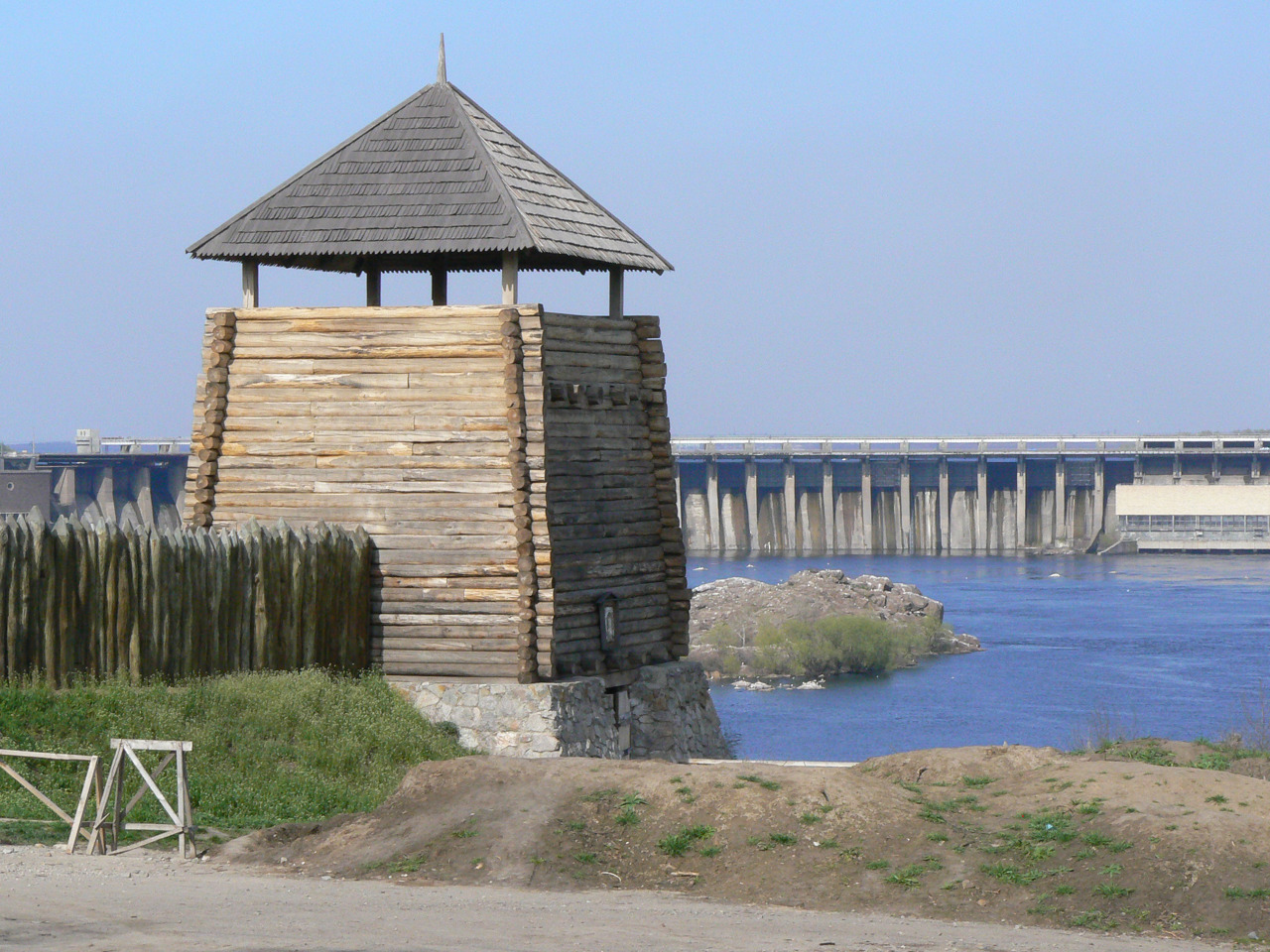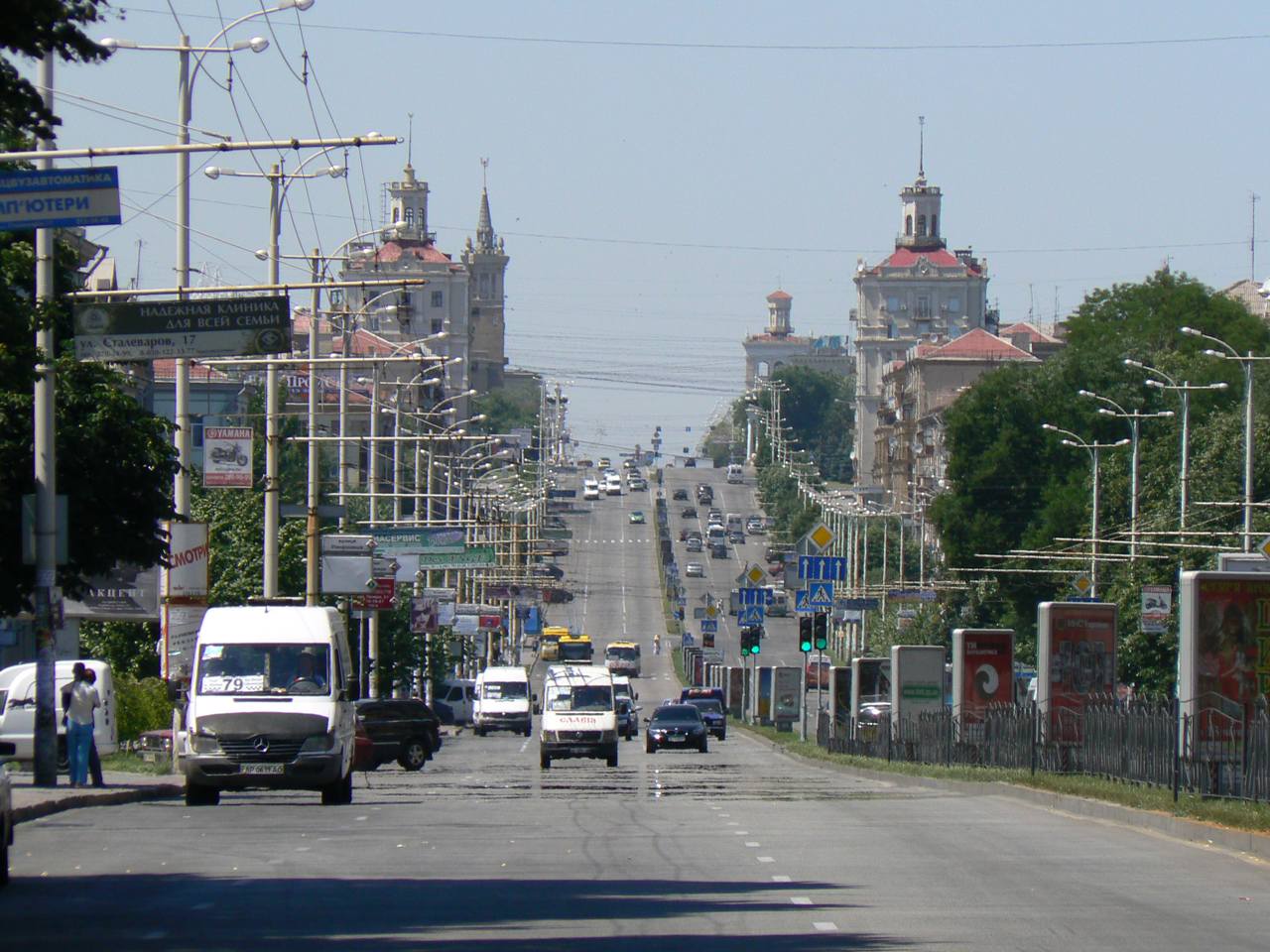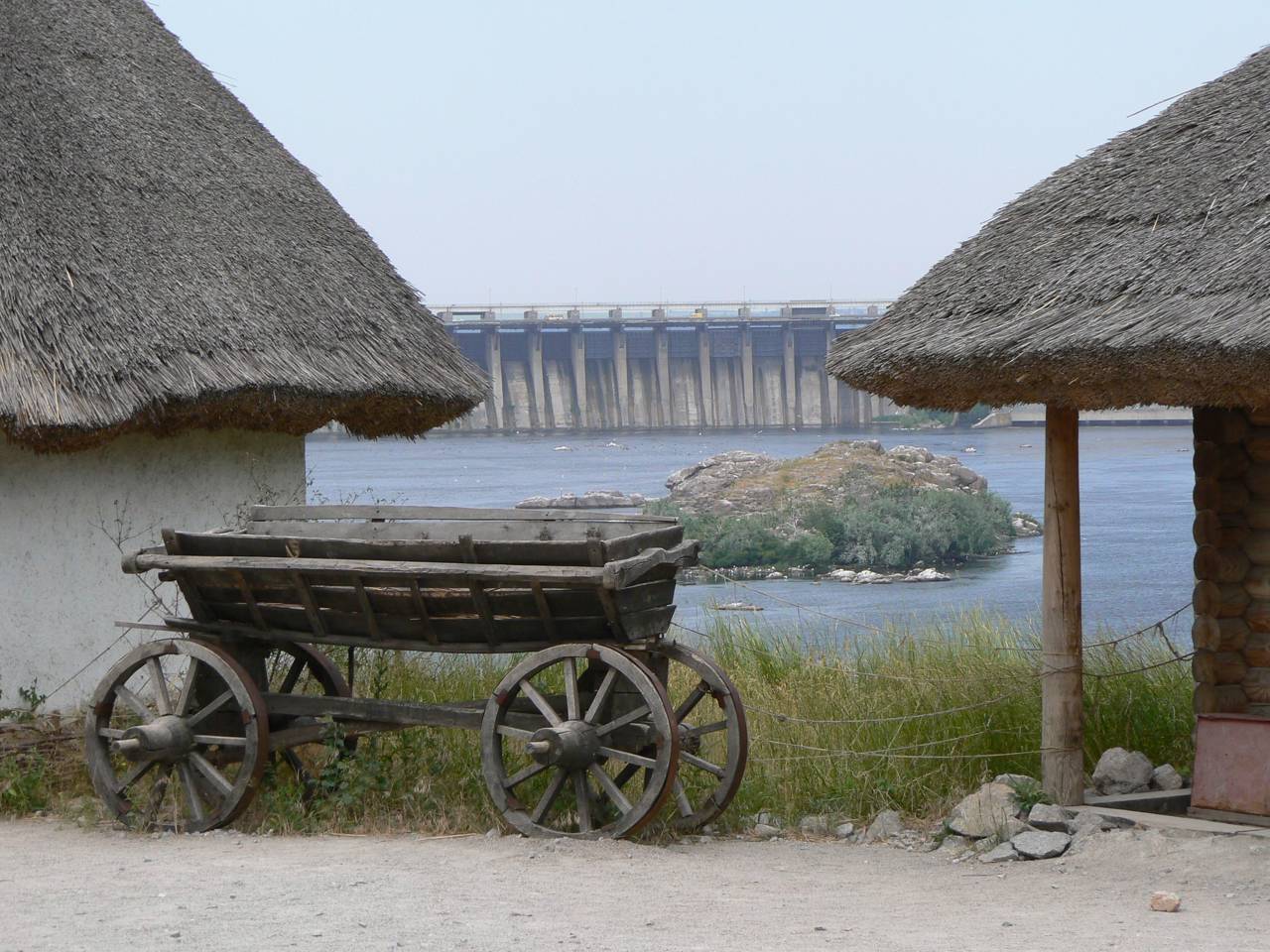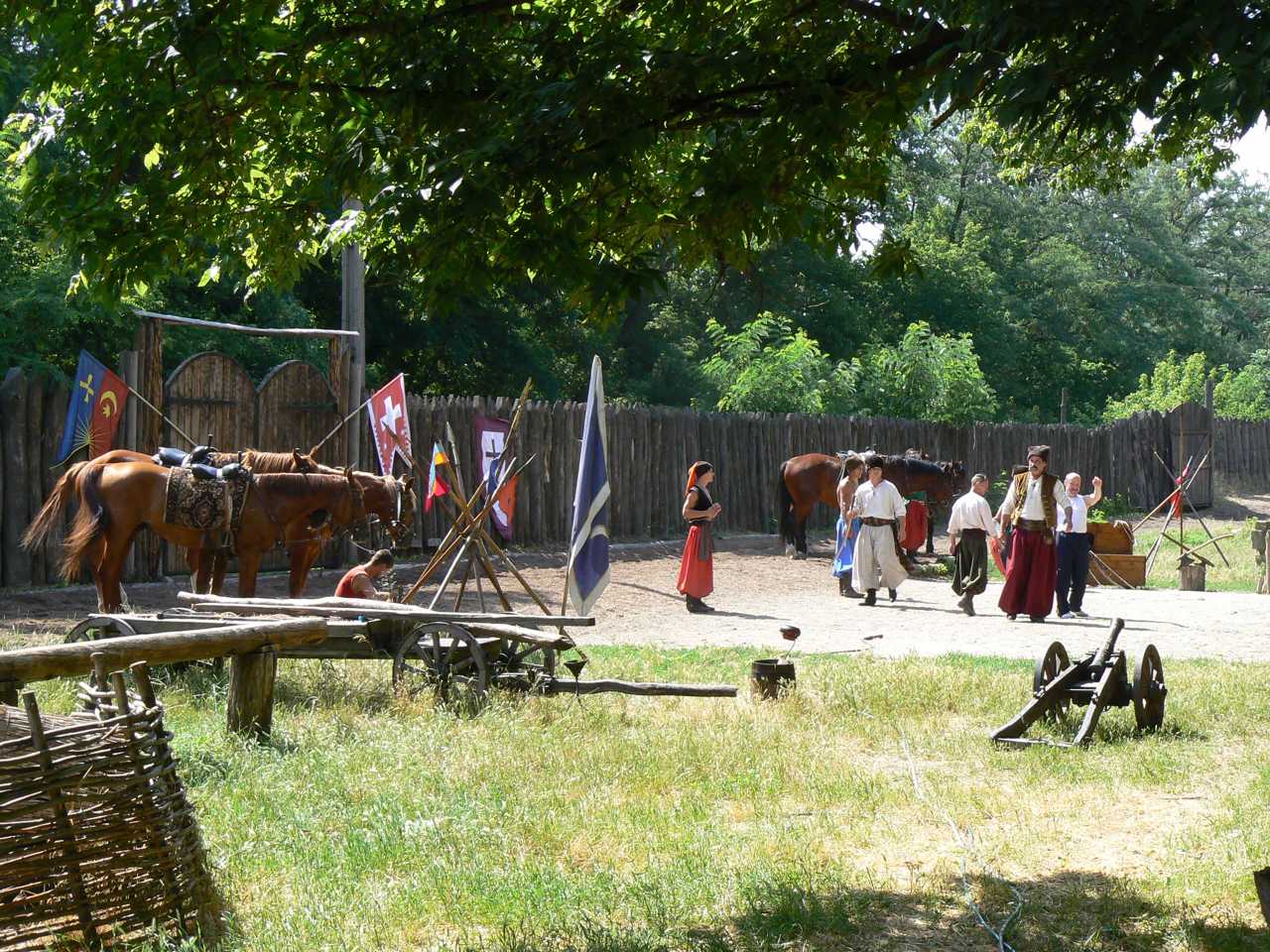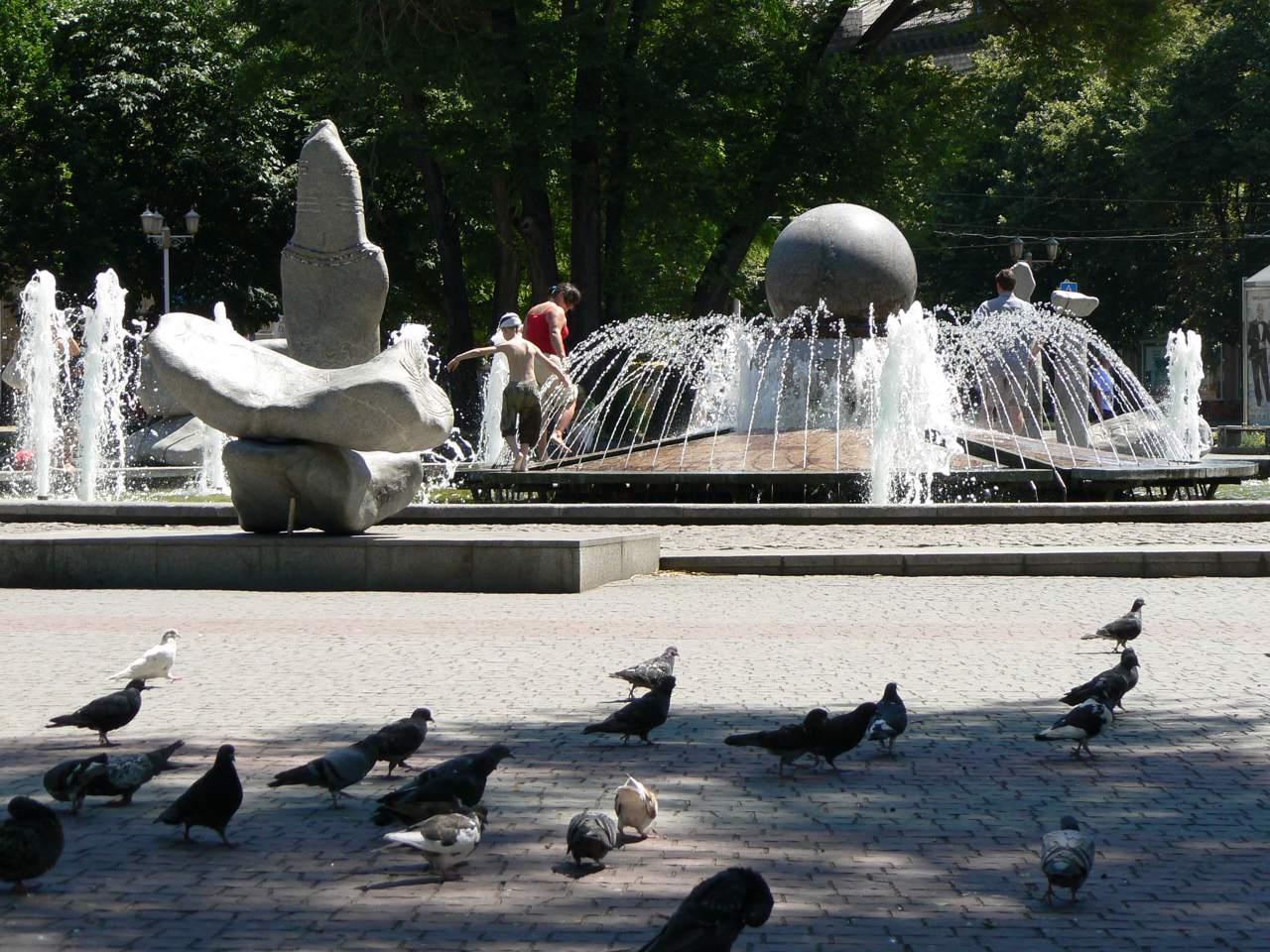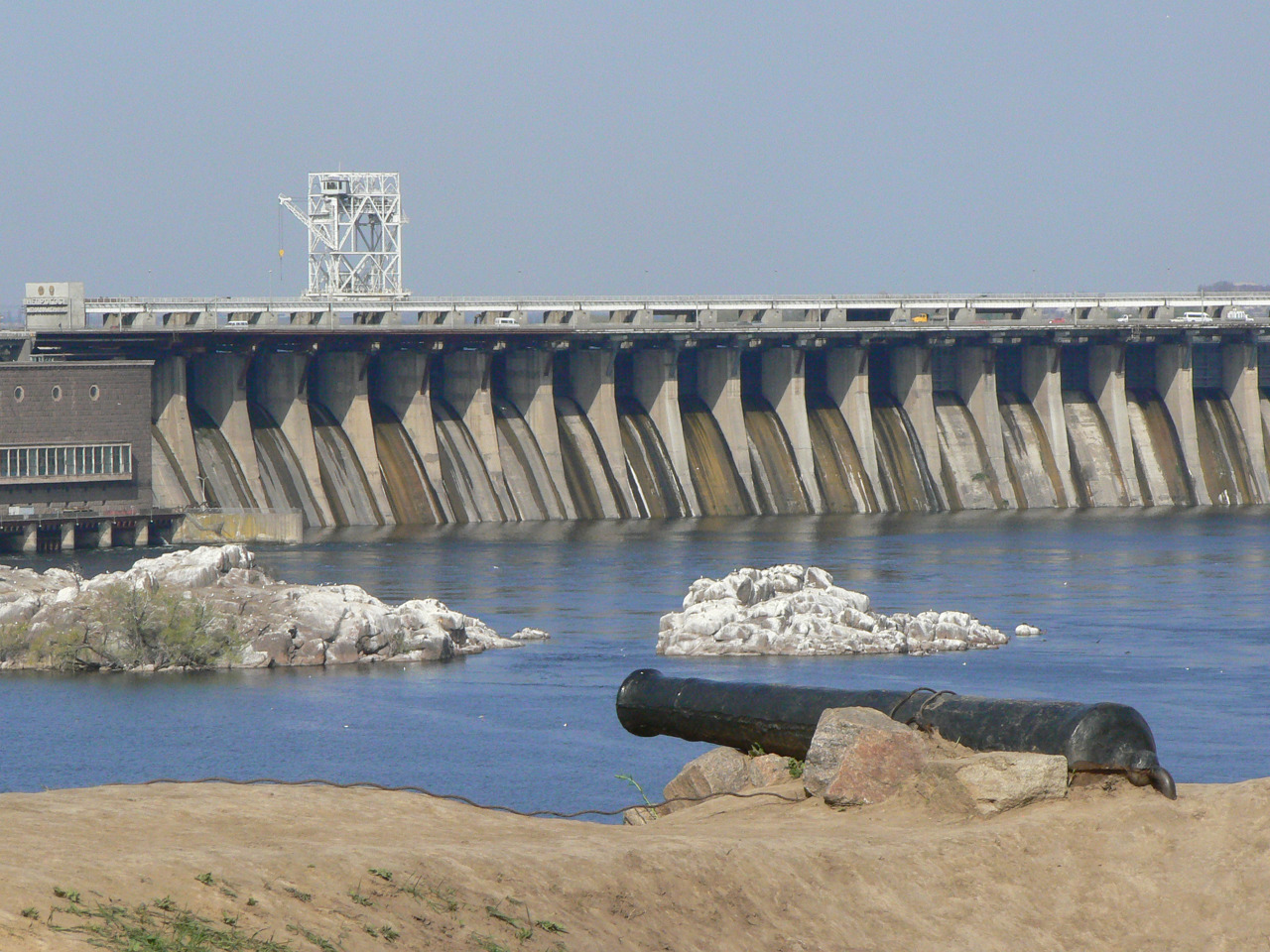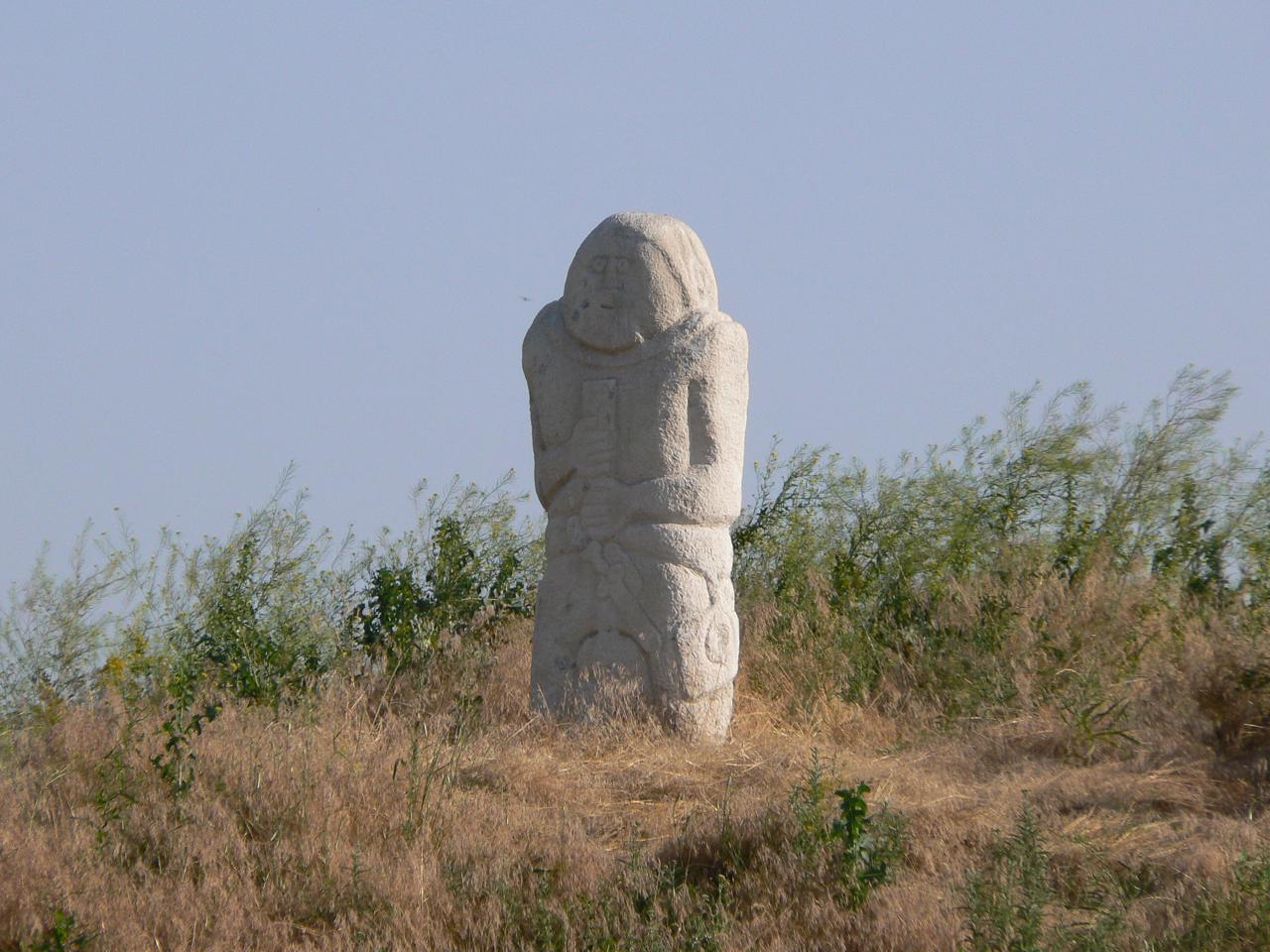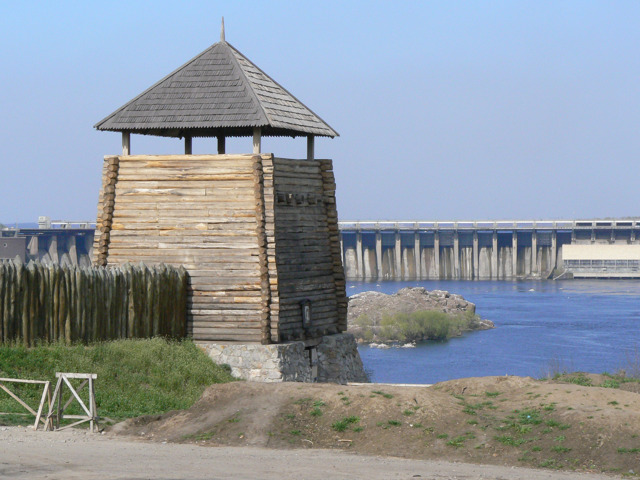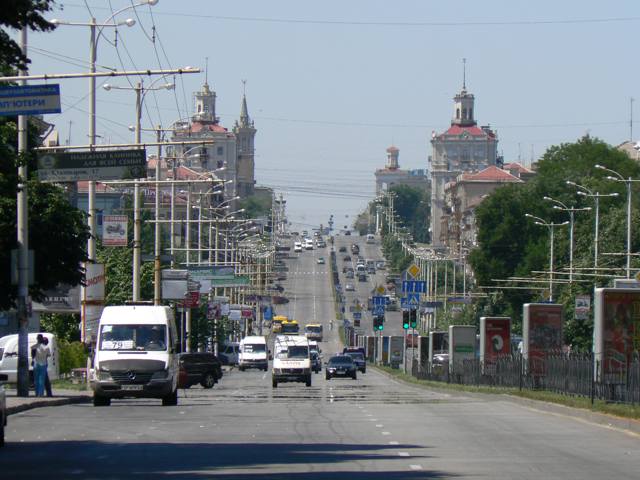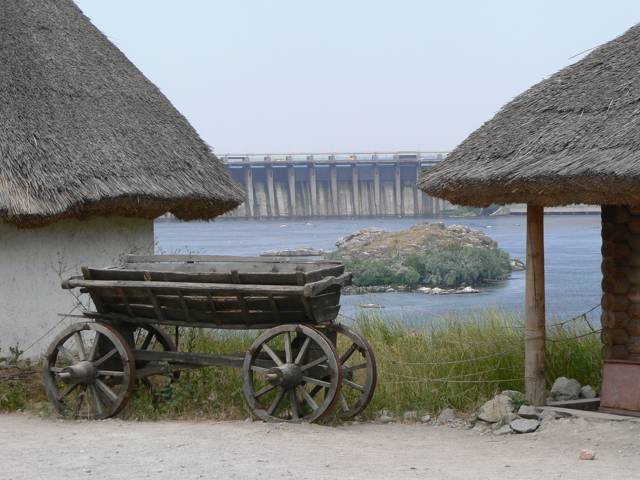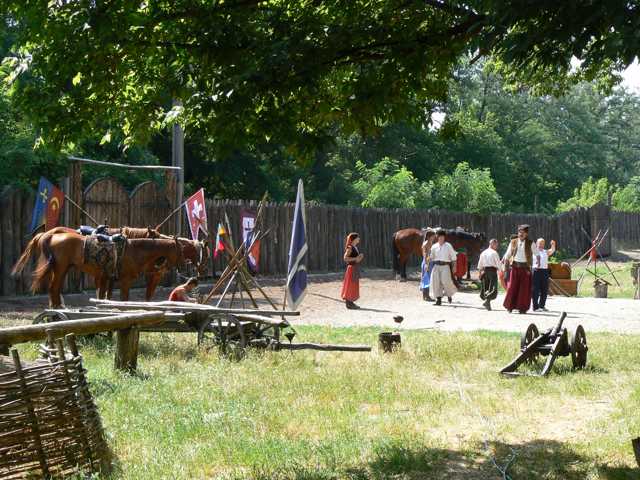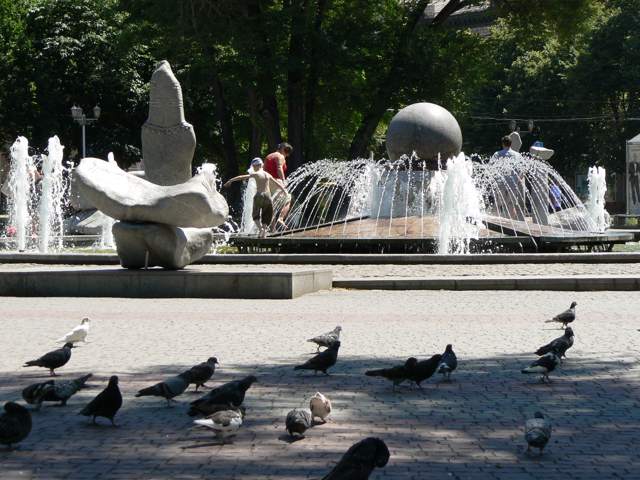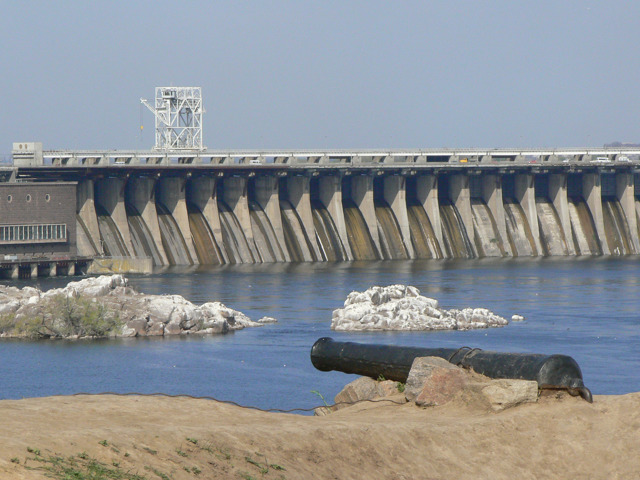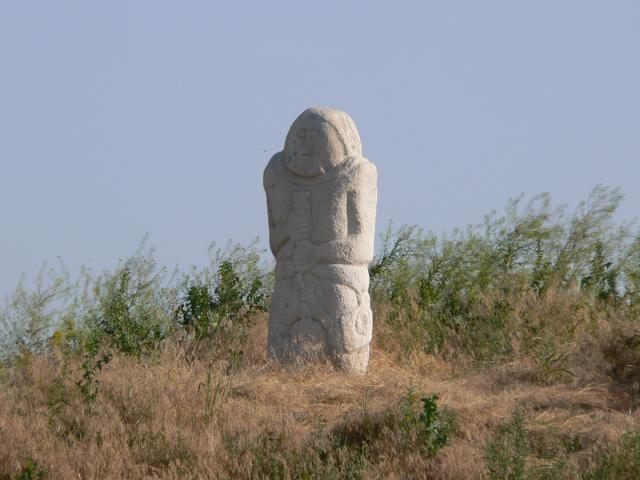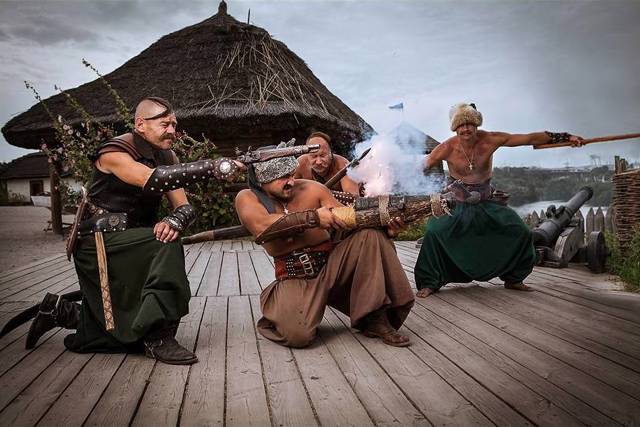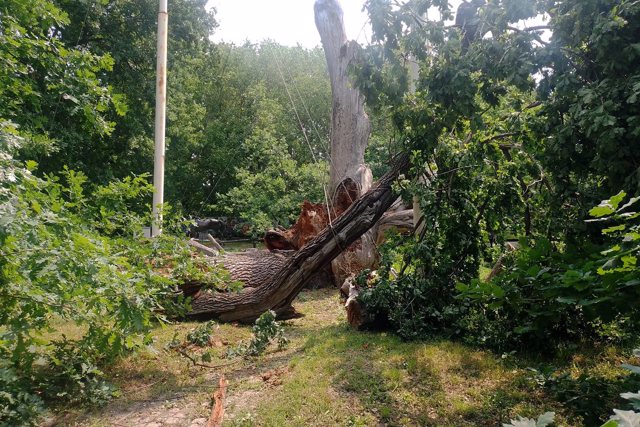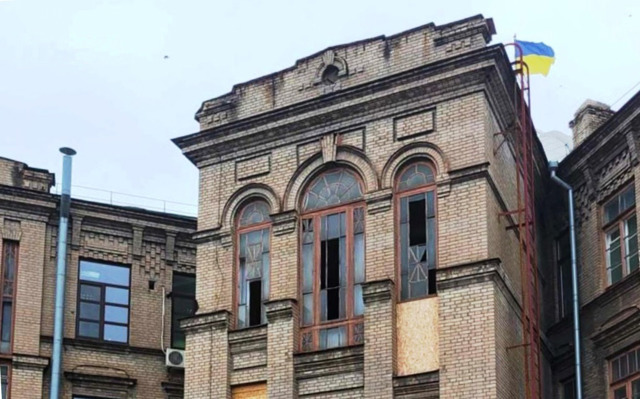Functional temporarily unavailable
Zaporizhzhia
Travel guide online Zaporizhzhia
General information about Zaporizhzhia
The city of Zaporizhzhia is a large industrial, scientific and cultural center on the Dnipro (former Oleksandrivsk).
Settlements near the crossing of Kraria (Kichkaska) on both banks of the Dnipro and on the island of Saint Hryhoriy (Khortytsia) were mentioned in 952 in the treatise "On the Administration of the Empire" by the Byzantine Emperor Constantine VII the Crimson.
For a long time, the year 1770, when the construction of the Oleksandrivsk Fortress was started, was considered the official date of foundation. However, as early as 1554-1555. the first Cossack fortifications appeared on Khortytsia Island to protect against the Tatars - Zaporizhzhia Sich. In its place in the 11th century, there was an ancient Rus fortress. Even earlier, Scythians and Sarmatians ...
The city of Zaporizhzhia is a large industrial, scientific and cultural center on the Dnipro (former Oleksandrivsk).
Settlements near the crossing of Kraria (Kichkaska) on both banks of the Dnipro and on the island of Saint Hryhoriy (Khortytsia) were mentioned in 952 in the treatise "On the Administration of the Empire" by the Byzantine Emperor Constantine VII the Crimson.
For a long time, the year 1770, when the construction of the Oleksandrivsk Fortress was started, was considered the official date of foundation. However, as early as 1554-1555. the first Cossack fortifications appeared on Khortytsia Island to protect against the Tatars - Zaporizhzhia Sich. In its place in the 11th century, there was an ancient Rus fortress. Even earlier, Scythians and Sarmatians lived here. In 1798, the Dnipro line of fortifications became the internal territory of Russia.
In 1932, the city was divided into two parts by the Dnipro HPP, which gave impetus to the development of the Zaporizhzhia industrial complex, which now includes more than 300 enterprises. One of the most famous is the AvtoZAZ plant, which produced the famous "Zaporozhets", the hero of numerous anecdotes. In the 1930s, the central part of the city underwent a complete reconstruction.
The old buildings have practically not been preserved, but the new "Stalinist" building is considered one of the best examples of urban planning art of the USSR.
Zaporizhzhia City Day is celebrated on the first Saturday of October.
Місто Запоріжжя - великий промисловий, науковий і культурний центр на Дніпрі (колишній Олександрівськ).
Поселення біля переправи Крарія (Кічкаської) по обидва береги Дніпра та на острові Святого Григорія (Хортиці) згадуються у 952 році в трактаті "Про управління імперією" візантійського імператора Костянтина VII Багрянородного.
Довгий час офіційною датою заснування вважався 1770 рік, коли було розпочато будівництво Олександрівської фортеці. Однак ще в 1554-1555 роках на осрові Хортиця з'явилися перші козацькі укріплення для захисту від татар - Запорозька Січ. На її місці в XI столітті існувала давньоруська фортеця. Ще раніше тут жили скіфи та сармати. У 1798 році дніпровська лінія укріплень стала внутрішньою територією росії.
У 1932 році місто розділив на ...
Місто Запоріжжя - великий промисловий, науковий і культурний центр на Дніпрі (колишній Олександрівськ).
Поселення біля переправи Крарія (Кічкаської) по обидва береги Дніпра та на острові Святого Григорія (Хортиці) згадуються у 952 році в трактаті "Про управління імперією" візантійського імператора Костянтина VII Багрянородного.
Довгий час офіційною датою заснування вважався 1770 рік, коли було розпочато будівництво Олександрівської фортеці. Однак ще в 1554-1555 роках на осрові Хортиця з'явилися перші козацькі укріплення для захисту від татар - Запорозька Січ. На її місці в XI столітті існувала давньоруська фортеця. Ще раніше тут жили скіфи та сармати. У 1798 році дніпровська лінія укріплень стала внутрішньою територією росії.
У 1932 році місто розділив на дві частини ДніпроГЕС, який дав поштовх розвитку запорізького промислового комплексу, до складу якого зараз входять понад 300 підприємств. Одне з найвідоміших - завод АвтоЗАЗ, на якому випускався знаменитий "Запорожець", герой численних анекдотів. У 30-х роках XX століття центральна частина міста зазнала повної реконструкції.
Старі будівлі практично не збереглися, проте нова "сталінська" забудова вважається одним з кращих прикладів містобудівного мистецтва СРСР.
День міста Запоріжжя відзначається в першу суботу жовтня.
Сплануй своє перебування у Zaporizhzhia
What to see and where to go in Zaporizhzhia
Tourist attractions and museums of Zaporizhzhia
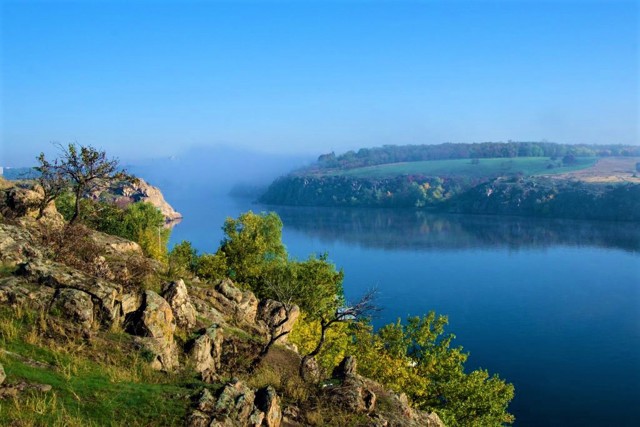
"Khortytsia" National Reserve
Historic area , Natural object , Archaeological site , Reserve , Rest on the water , Recreation area
The "Khortytsia" National Reserve is named after the largest island on the Dnipro (23.5 square kilometers), which is now located in the middle of the city of Zaporizhzhia. Khortytsia Island is one of the most famous places in Ukraine, a unique historical and cultural complex and an ancient symbol of Cossack freedom.
The island was formed by a geological fault in the granite massif that occurred approximately 2.5 million years ago. Now Khortytsia impresses with its picturesque cliffs and small islands. In the north, granite rocks are majestically raised above the water mirror of the Dnipro by almost 30 meters, and the southern edge of the island is part of the Zaporizhzhia Velykiy Luh flooded by the Kakhovka Reservoir.
Long ago, this natural fortress served as reliable protection for the tribes that settled here, traces of which have been preserved in abundance. In particular, the "Scythian Camp" complex exhibits barrows and stone statues from the Scythian times, a pagan sanctuary has been preserved from the Old Slavic times, and the remains of the Protolche settlement from the Ancent Rus times.
In the 16th century, Zaporizhzhian Sich, a fortified camp of Ukrainian Cossacks, was founded on the island of Mala Khortytsia, which later became the center of the Cossack state, changing its location several times. A generalized image of Cossack fortresses is the Historical and Cultural Complex "Zaporizhzhian Sich" in Khortytsia, which reproduces in detail the arrangement of all eight Cossack Sichs that existed in the 16th - 18th centuries.
The current center of Khortytsia is the museum space around the Zaporizhzhian Cossacks History Museum, where a multi-year reconstruction is underway (part of the exhibits are presented in the Museum Studios "City Beyond the Thresholds"). The Hill of Unity with an observation deck and the "Circle of Unity" art object are located nearby. The venue for the ceremonial events is the Cossack Circle. Along the coast of the museum, there is a "Taras Trail", dedicated to the stay of the young Taras Shevchenko in Khortytsia in the summer of 1843.
In the southern part of the island, you can visit the only Zaporizhzhian Cossacks equestrian theater in Ukraine and see the famous Cossack seagull in the Museum of Shipping.
There is a car parking lot, bicycle rental, and a cafe in the pre-museum space. There is a hotel in the central part of the island, and in the eastern and western parts of Khortytsia there are several sanatoriums and recreation centers, and there are restaurants.
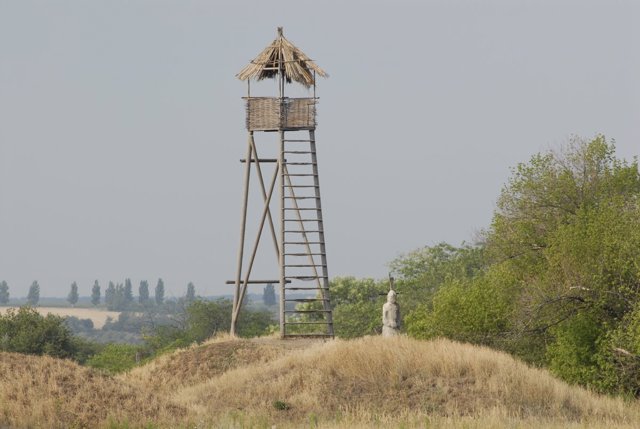
"Scythian Camp" Memorial-Tourist Complex
Historic area , Museum / gallery , Archaeological site
The memorial-tourist complex "Scythian Camp" is located in Zaporizhzhia on the highest point of the Khortytsia island (59 meters above the Dnipro level), which is crowned by the largest of the Khortytsia burial mounds, the "Zorova tomb" that has survived.
A copy of the sculpture of a Scythian warrior is installed on the mound.
At the beginning of the 20th century, there were 129 burial mounds on Khortytsia Island. Only 3 of the 28 burial mounds that once belonged to the burial mound group "Zorova tomb" have survived. In 2005, archaeologists reconstructed 8 more burial mounds, among which one was investigated and restored, two were restored on the site of the destroyed ones, and the rest are model mounds and the sanctuary of Areus .
In the open-air museum, many stone artifacts are collected: a millstone (a symbol of abundance and fertility), a roller or garman (a device for threshing grain), stupas (for pounding grain), statues, anthropomorphic stelae, etc.
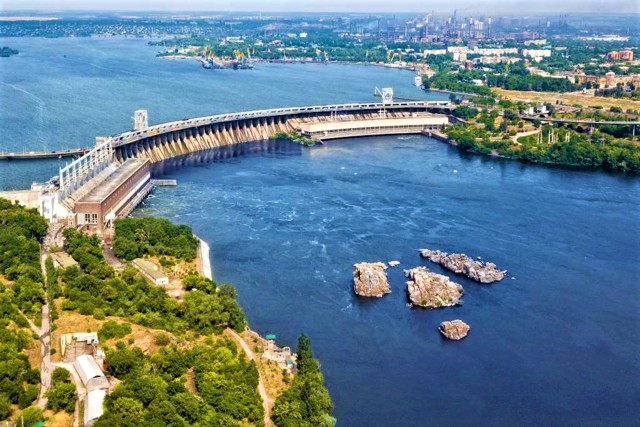
Dniprovska HPP (DniproHPP)
Architecture
Dniprovska HPP (DniproHPP, DniproHES) is a unique hydroelectric facility, the first hydroelectric power station in the USSR and the largest in Europe at that time.
The construction of the Zaporizhzhia hydroelectric power station was led by academician Oleksandr Vinter with the assistance of American consulting engineers - Frank Feyfer, Vilhelm Meffi, Fridrikh Vinter, Heorh Binder and "General Electric" engineers Charlz Dzhon Tomson and Hyu Kuper. As a result of the construction of the dam, the Dnipro rapids were flooded, which ensured navigation along the entire course of the Dnipro. Thanks to the construction of the station, the rapid economic development of the city began.
Next to the building of the HPP directorate is the massive building of the DniproHPP museum. Currently, two halls with expositions on the construction, restoration and construction of the second stage of the hydroelectric power station are available. During the tour, you can see the layout of the station, operating turbines in the engine room.
On the morning of March 22, 2024, during a massive missile-drone attack on Ukraine, Russian troops attacked the DniproHPP with missiles, hitting hydroelectric structures and a dam. A fire broke out at the station. In addition, a Russian missile hit a trolleybus with people moving along the DniproHPP embankment.
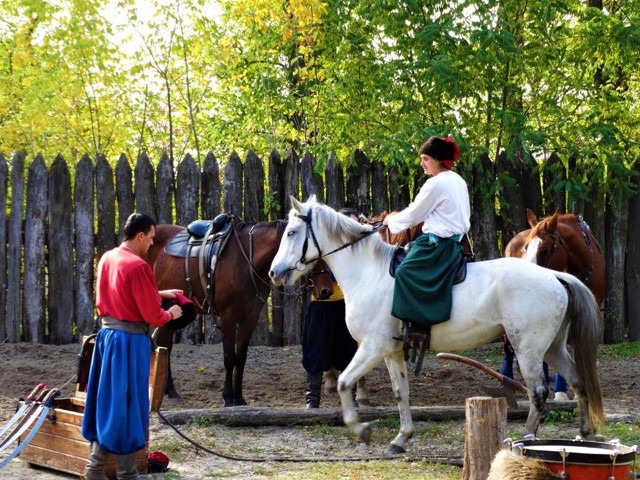
Equestrian Theater "Zaporizhzhian Cossacks"
Entertainment / leisure , Theater / show
In the south-eastern part of the island of Khortytsia in Zaporizhzhia, in the area of Plavni, there is a folklore and ethnographic equestrian theater "Zaporizhzhian Cossacks", which carefully preserves ancient Cossack traditions.
At the request of large tourist groups, equestrian performances and folklore performances are held here with the performance of folk ensembles and demonstrations of traditional Cossack crafts (the date and time of the next performance should be ascertained in advance by phone). After the performance, you can ride horses, and also buy souvenirs, made in front of your eyes by a blacksmith and a potter.
On the territory there is a cafe "Cossack Zastava" (traditional Ukrainian cuisine) with a banquet hall, two huts and summer canopies.
Nearby, in the hangar, the Cossack Shipping "Chayka" and the brigantine of 1736-1739, raised from the bottom of the Dnipro in 1999-2007, are stored, with which archaeologists and restorers of the "Museum of Shipping" are working.
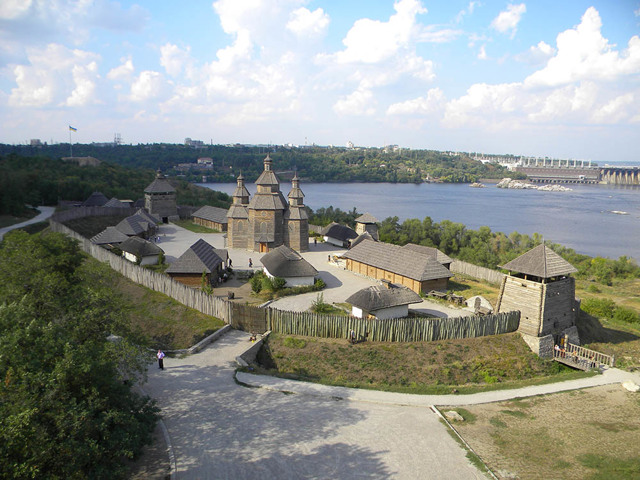
Historical and Cultural Complex "Zaporozhian Sich"
Historic area , Museum / gallery , Ethnographic complex
The historical and cultural complex "Zaporozhian Sich" on the island Khortytsia in Zaporizhzhia reproduces a generalized image of all eight Sich, which existed in the XVI-XVIII centuries on the banks of the Dnipro.
Sich is a fortified military town surrounded by a fence, which served as a military and political center of the Zaporozhian Cossacks - the capital of the Liberties of the Zaporozhian Lowland Army, ie free Cossack lands.
The island of Khortytsia at that time was a strategic point on the way of Tatar raids on Ukrainian lands. At the same time, the political influence of the Polish-Lithuanian Commonwealth and the Moscow Principality, which controlled other Ukrainian lands, did not extend to these territories.
Khortytsia was associated with the activities of the first organizer of the Zaporozhian Army Ostap Dashkevych and the founder of the first Sich Dmytro (Bayda) Vyshnevetsky, who in 1553 built a Cossack castle on the island of Mala Khortytsia (now Bayda Island). All subsequent Sichs were located below the Dnipro, but were formed on common principles.
A reduced copy of the Cossack fortress is surrounded by a moat, an embankment and a fence made of logs with several defensive towers. The interior space consists of two parts - the Small Kosh (trade and craft suburb) and the Large Kosh (Cossack garrison). The main building of the Sich is the current Church of the Intercession of the Blessed Virgin on the central square. There are Cossack huts, a smithy, a pottery, an inn and a Greek house where ambassadors were received.
The expositions in the premises tell about the functioning of the Sich governing bodies (the House of the Kosh Ataman, the Military Chancellery), the work of the Pushkarnia (arsenal), and the traditional crafts of the Cossacks. The exhibition "Cossack Mamay and the Cradle" is dedicated to the image of the legendary Zaporozhian warrior-characterist.
The Cossack Battle Theater "Sich Cossacks" is based in the "Zaporozhian Sich", which regularly holds demonstrations of Cossack martial arts and master classes on the possession of Cossack weapons.
Historical and cultural complex "Zaporozka Sich" is accessible to people in wheelchairs. Attachable ramps provide access to each object of the complex.
Zaporizhzhia in news and blogs
Reviews Zaporizhzhia
Geographical information about Zaporizhzhia
| {{itemKey}} | {{itemValue}} |
|---|---|
| Region |
Zaporizhzhia |
